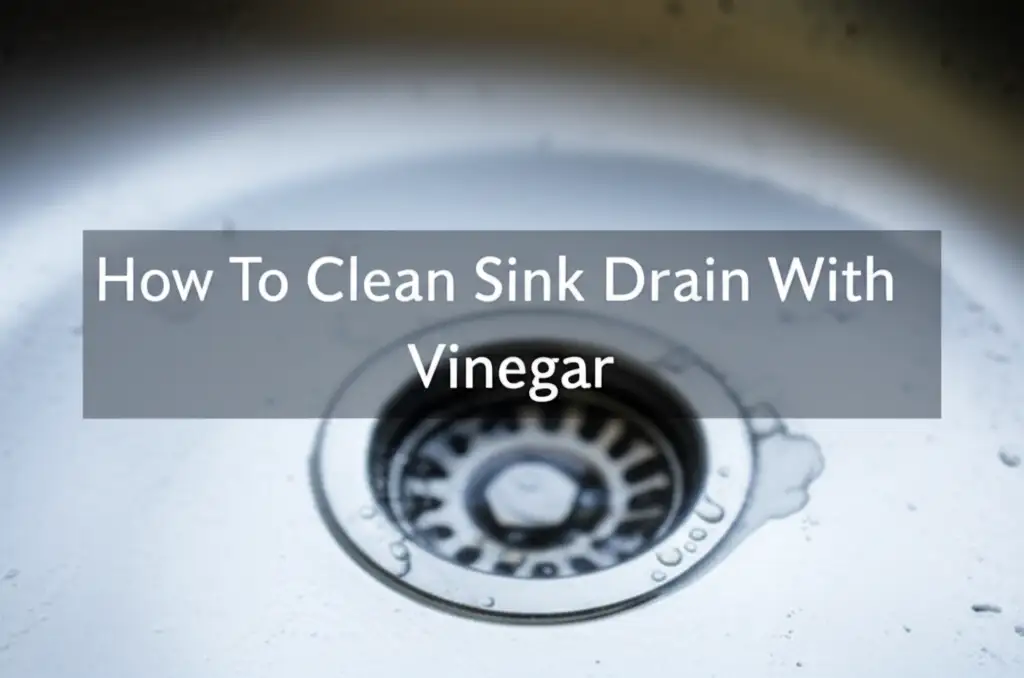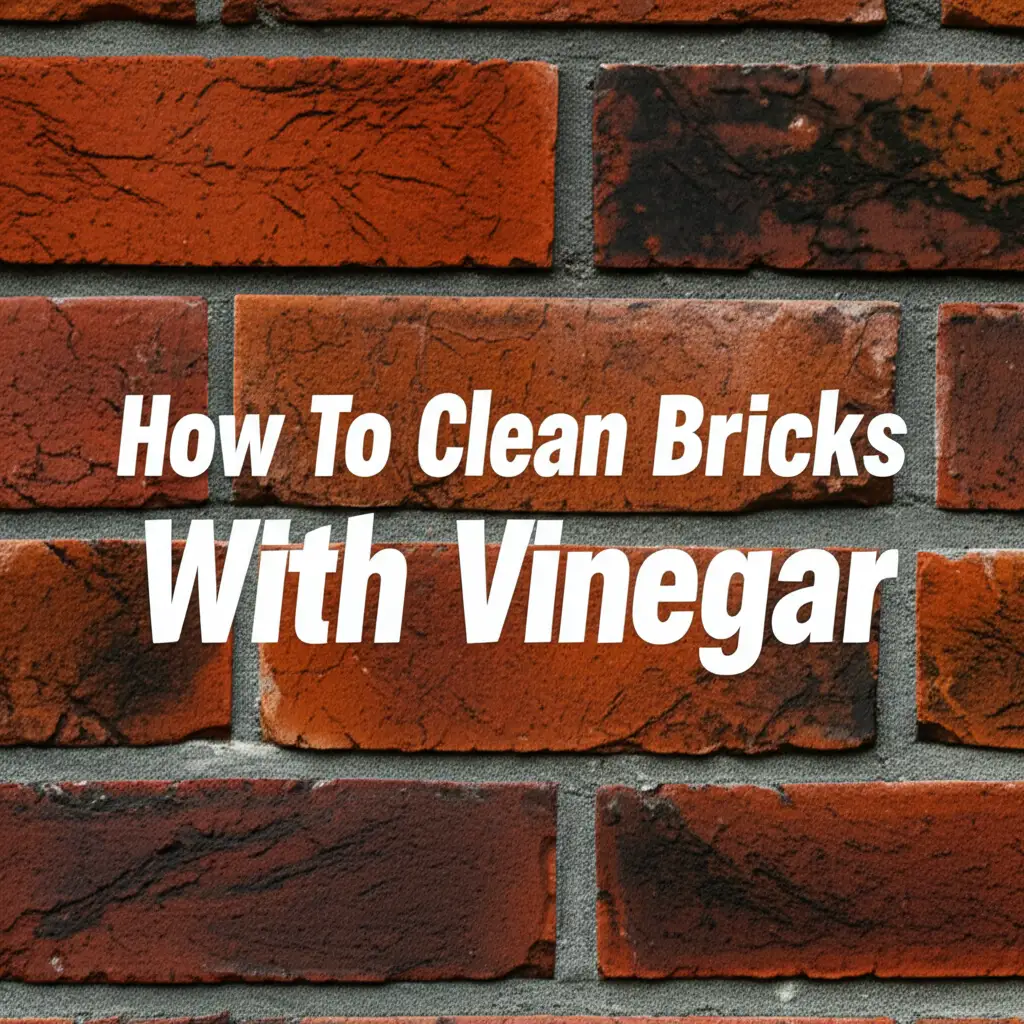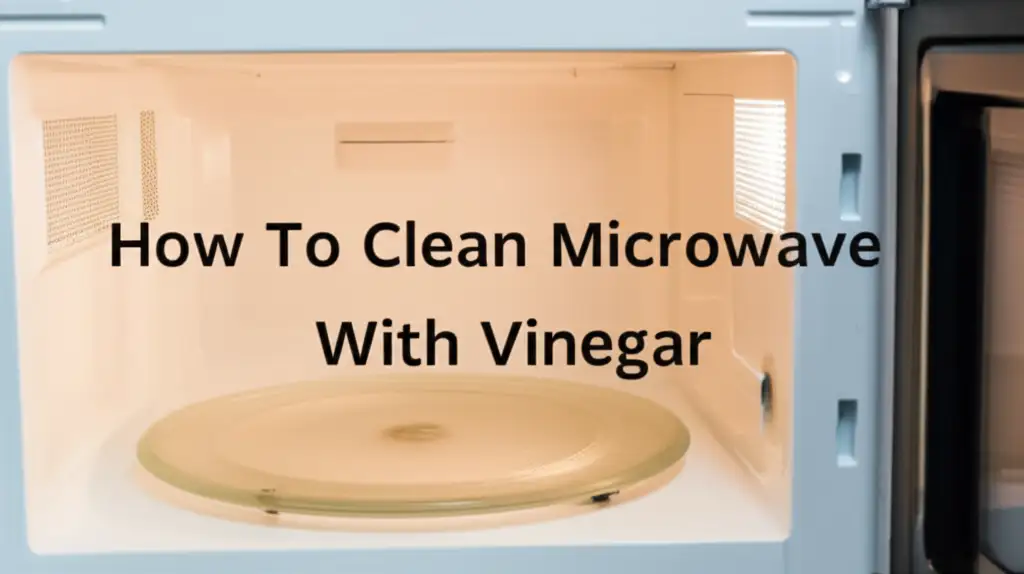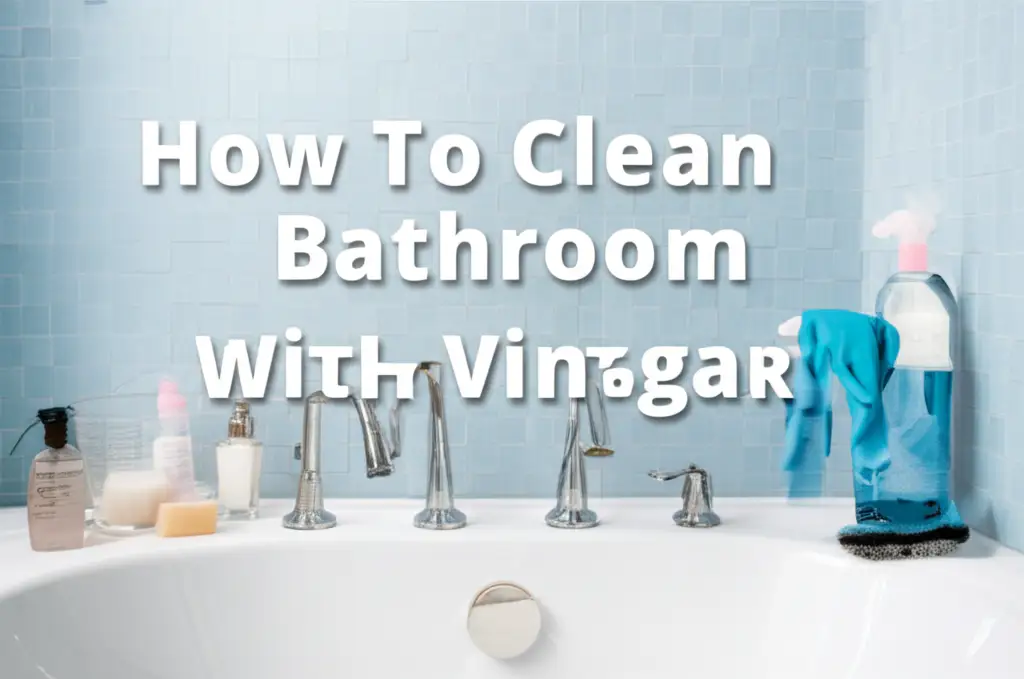· Home Cleaning · 15 min read
How To Clean Sink Drain With Vinegar

Clean Your Sink Drain with Vinegar: A Simple Guide
Is your sink draining slowly? Do you notice unpleasant smells coming from the pipes? A dirty or clogged sink drain is a common household problem. Many people reach for harsh chemical cleaners, but these can damage pipes and harm the environment. Fortunately, you can clean sink drain with vinegar, a powerful and natural solution.
This article shows you how to effectively clean your sink drain using vinegar. We will explore why vinegar works and outline various methods, including popular vinegar and baking soda combinations. You will learn specific techniques for kitchen and bathroom drains. We also cover preventive maintenance tips to keep your drains clear and fresh. Get ready to experience the power of simple, natural cleaning.
Takeaway
- Vinegar offers an eco-friendly and cost-effective way to clean sink drains.
- Combine vinegar with baking soda for a powerful reaction against clogs and odors.
- Regular maintenance helps prevent future blockages and keeps drains fresh.
- Different methods work for various types of clogs, from minor blockages to stubborn grime.
Cleaning your sink drain with vinegar involves pouring hot water, followed by a cup of baking soda, then a cup of white vinegar. The fizzing reaction helps break down grime and odors. After 30 minutes, flush with more hot water to clear the drain.
Why Vinegar Is an Excellent Drain Cleaner
You might wonder why plain white vinegar works so well on drains. Vinegar is acetic acid. This acidic nature makes it highly effective at breaking down various substances found in drains. It can dissolve grease, soap scum, and mineral deposits. These are common culprits behind slow drains and bad smells.
Vinegar is also a natural deodorizer. It neutralizes foul odors instead of just masking them. This means your drain will not just be clear, it will smell fresh too. Using vinegar keeps harmful chemicals out of your home and waterways. This makes it a safe choice for you, your family, and the planet. It is also an affordable and readily available household item.
Its versatility extends beyond drains. Vinegar cleans many surfaces in your home. It tackles limescale, disinfects, and shines. This makes it a staple for anyone seeking a natural cleaning approach. When you choose vinegar, you select a powerful, safe, and environmentally friendly option.
Basic Vinegar Drain Cleaning for Odors and Minor Grime
Sometimes, your drain just needs a refresh, not a full unclogging. Minor odors and light grime build-up respond well to a simple vinegar flush. This method is easy and acts as a great weekly or bi-weekly maintenance step. I find this simple technique helpful for keeping my kitchen sink smelling clean after cooking. It only takes a few minutes but makes a big difference.
First, boil a pot of water. Pour it slowly down the drain. This helps loosen any loose debris. Next, pour one cup of white distilled vinegar down the drain. Let it sit for at least 30 minutes. For stronger odors, you can leave it overnight. The vinegar works to dissolve any remaining soap scum or food particles. It also neutralizes any lingering smells. Finally, flush the drain with more hot water. This washes away the loosened grime and vinegar. This simple process keeps your drain fresh and prevents small issues from becoming bigger problems. This is an excellent first step before trying more intensive methods.
The Power Duo: Cleaning Sink Drain with Vinegar and Baking Soda
When your drain is more than just smelly, a combination of vinegar and baking soda offers a powerful, fizzing solution. This duo creates a chemical reaction that helps dislodge tougher clogs. I have used this method many times to rescue my bathroom sink from hair and soap residue. It is a very satisfying process to watch the mixture work. This combination is particularly effective for cleaning gunk out of bathroom sink drains. The fizzy action lifts away accumulated grime.
How to Use Vinegar and Baking Soda
- Remove Standing Water: First, remove any standing water from the sink. You want the baking soda and vinegar to directly contact the clog.
- Pour Baking Soda: Pour one cup of baking soda directly down the drain. Try to get as much of it into the drain opening as possible.
- Add Vinegar: Slowly pour one cup of white distilled vinegar down the drain. You will immediately see a fizzing reaction. The mixture expands and bubbles. This is the magic working.
- Cover the Drain: If possible, cover the drain with a stopper. This traps the fizzing action within the pipe. It forces the pressure downwards, helping to push through the blockage.
- Wait Patiently: Let the mixture sit for 30 minutes to an hour. For very stubborn clogs, let it sit overnight. The longer it sits, the more time it has to break down the clog.
- Flush with Hot Water: After the waiting period, flush the drain with hot water. Boiling water works best for this step. Pour it slowly to ensure everything washes away. You might hear gurgling sounds as the clog clears.
This method is highly effective for various drain issues. It helps remove black stuff in sink drains which often signals mold or mildew growth. The combined action of vinegar and baking soda effectively cleans and deodorizes. This powerful duo also works wonders for other household appliances. You can use a similar approach to clean your dishwasher with vinegar and baking soda. This demonstrates the cleaning power of this natural combination throughout your home.
Tailoring Your Cleaning: Kitchen vs. Bathroom Sink Drains
Different sinks face different challenges. A kitchen sink drain deals mainly with food particles and grease. Bathroom sink drains handle hair, soap scum, and toothpaste. Understanding these differences helps you tailor your vinegar cleaning approach for better results. I find that focusing on the specific type of grime makes the cleaning process much more efficient.
Kitchen Sink Drain Cleaning
Kitchen sinks often suffer from grease buildup. Grease cools and hardens in pipes, creating stubborn blockages. Food scraps also contribute to clogs and foul odors. To clean a kitchen sink drain with vinegar:
- Boiling Water First: Always start with a large pot of boiling water. Pour it slowly down the drain. This helps melt and flush away some initial grease.
- Baking Soda and Vinegar: Follow with one cup of baking soda, then one cup of white vinegar. Cover the drain and let it sit for at least an hour.
- Hot Water Flush: Flush with another pot of boiling water. For tough grease clogs, repeat the process.
- Degreasing Action: The acidic nature of vinegar works to cut through and dissolve the grease. Baking soda helps scour the pipes. This combination makes it an effective way to clean grease from drain pipes. Regular application prevents large grease blockages.
Bathroom Sink Drain Cleaning
Bathroom drains are a magnet for hair, soap scum, and various grooming products. Hair forms tangled mats, trapping soap and other debris. This creates stubborn clogs. To clean a bathroom sink drain with vinegar:
- Manual Hair Removal (Optional but Recommended): If you can, use a drain snake or even pliers to pull out visible hair. This greatly improves the effectiveness of the vinegar treatment. You can learn more about how to clean hair out of a bathroom sink drain for persistent hair issues.
- Baking Soda and Vinegar: Pour half a cup of baking soda down the drain, followed by half a cup of white vinegar. Let it fizz for 30-60 minutes.
- Hot Water Rinse: Finish with a flush of hot water. The fizzing action helps dislodge soap scum and break down the organic matter around hair.
- Preventative Measures: Consider using a drain protector or hair catcher. This prevents future hair clogs. Regular flushing with hot water and a small amount of vinegar can keep the drain clear. This also applies to shower drains; learn how to clean hair from a shower drain to maintain all your bathroom drains.
By customizing your cleaning approach, you can achieve cleaner, clearer drains for both your kitchen and bathroom.
Advanced Techniques and Troubleshooting for Stubborn Clogs
Sometimes, a simple baking soda and vinegar treatment is not quite enough. For really stubborn clogs, you may need to apply advanced techniques or understand when to try a different approach. I have personally encountered those drains that just refuse to clear. It requires patience and sometimes a bit more muscle. Do not give up easily; vinegar has more tricks up its sleeve.
Overnight Treatment for Deep Clogs
For particularly slow or blocked drains, allow the vinegar and baking soda mixture more time to work. After pouring the baking soda and vinegar, leave the solution in the drain overnight. This extended contact time allows the acetic acid in the vinegar and the abrasive action of the baking soda to break down tough organic matter more thoroughly. In the morning, flush the drain with several cups of boiling water. This long soak often works wonders for persistent clogs.
Using a Plunger with Vinegar and Baking Soda
If the clog is still present after the initial treatment, combine the chemical action with physical force.
- Perform the Vinegar and Baking Soda Treatment: Follow the steps mentioned earlier (baking soda, then vinegar, cover).
- Wait: Let the mixture sit for at least 30 minutes.
- Use a Plunger: After waiting, remove the stopper. Fill the sink with enough hot water to cover the bell of your plunger. Place the plunger over the drain and create a tight seal. Plunge vigorously for 20-30 seconds. The suction and pressure can dislodge the loosened clog.
- Flush and Repeat: Remove the plunger and see if the water drains. If not, repeat the plunging action. If it drains slowly, you might consider repeating the entire baking soda and vinegar treatment followed by plunging.
Dealing with Mineral Buildup
Hard water can leave mineral deposits in your pipes over time. These deposits narrow the pipe and catch debris, leading to clogs. Vinegar excels at dissolving mineral buildup.
- For persistent mineral issues, use a stronger vinegar solution.
- You can pour undiluted white vinegar directly down the drain.
- Let it sit for several hours or overnight.
- The high acidity helps break down calcium and magnesium deposits.
- Follow with a flush of hot water. This method is similar to how vinegar helps clean hard water stains from stainless steel sinks. It is also effective for cleaning appliances. For example, cleaning shower heads with vinegar uses the same principle to remove mineral deposits.
These advanced techniques offer solutions for more challenging drain issues. They extend the effectiveness of simple vinegar cleaning.
Preventive Maintenance: Keeping Your Drains Clear with Vinegar
Cleaning a clogged drain is reactive. Practicing regular preventive maintenance is proactive. It keeps your drains flowing freely and prevents unpleasant odors before they start. Incorporating vinegar into your regular cleaning routine is a simple yet effective way to maintain healthy drains. I make it a habit to perform these steps regularly, and it saves me from bigger headaches later.
Weekly Hot Water Flush
Make it a habit to flush your drains weekly with very hot water. After doing dishes or showering, let the hot water run for a minute or two. This helps push down any minor accumulations of grease, soap, or hair before they can solidify. It keeps the pipes warm and helps prevent immediate sticking. This simple action can significantly reduce the frequency of drain problems.
Monthly Vinegar and Hot Water Flush
Once a month, perform a mini-version of the basic vinegar cleaning.
- Boil Water: Pour a pot of boiling water down each drain.
- Add Vinegar: Follow with half a cup of white distilled vinegar.
- Wait and Flush: Let it sit for 30 minutes, then flush thoroughly with hot tap water. This routine helps to dissolve any minor buildup of soap scum, grease, and other residues. It also neutralizes odors, leaving your drains fresh. This monthly flush is particularly effective for high-use drains like kitchen and bathroom sinks.
Using Drain Strainers and Hair Catchers
Prevention is often about stopping the problem at its source. Install drain strainers in kitchen sinks to catch food particles before they enter the pipes. For bathroom sinks and showers, use hair catchers. These simple devices physically block hair and soap scum from going down the drain. They are inexpensive and easy to clean. Regular emptying of these strainers prevents massive clogs. This is a critical step for preventing future gunk build-up in bathroom sink drains. Catching hair and debris before it enters the plumbing system saves a lot of trouble.
Avoiding Problematic Substances
Being mindful of what goes down your drain is key.
- Kitchen: Never pour cooking grease or oil down the sink. Let it cool and solidify, then scrape it into the trash. Avoid grinding fibrous foods like celery stalks, potato peels, or coffee grounds in your garbage disposal. These can easily clog pipes.
- Bathroom: Try to limit how much hair goes down the drain. Brush hair before showering. Avoid flushing cotton balls, wet wipes, or dental floss. These items do not break down in water and can create severe blockages.
By combining regular flushing, monthly vinegar treatments, physical barriers, and smart disposal habits, you can keep your sink drains clear and odor-free with minimal effort. This proactive approach saves you time and money in the long run.
When Vinegar Isn’t Enough: Knowing When to Seek Professional Help
While vinegar is a powerful natural cleaner, it has limits. Some clogs are simply too severe or complex for home remedies. Knowing when to stop DIY efforts and call a professional plumber can save you time, frustration, and potential damage to your plumbing system. I learned this lesson the hard way once when a clog was deeper than I thought. It is important to recognize the signs for when to call an expert.
Signs a Plumber Is Needed:
- Persistent Clogs: You have tried the vinegar and baking soda method multiple times, and the drain is still clogged or drains extremely slowly. This suggests a deep, stubborn blockage.
- Multiple Clogged Drains: If more than one drain in your home is backing up (e.g., bathroom sink and toilet, or kitchen sink and washing machine), it often indicates a main line clog. Vinegar cannot fix this.
- Foul Odors Persist: Even after cleaning, if a strong sewer smell remains, it might point to a problem beyond a simple drain clog. This could be a broken vent pipe or a deeper sewer issue.
- Gurgling Sounds: Gurgling noises from other drains or the toilet when you use a sink can indicate air trapped in the pipes due to a blockage in the main line.
- Water Backing Up: If water backs up into another fixture when you use a different one (e.g., using the washing machine causes the toilet to overflow), it is a clear sign of a significant main sewer line blockage.
- Visible Pipe Damage: If you see leaks, cracks, or corrosion around your pipes, especially under the sink, cleaning will not solve the underlying issue. These problems require professional repair.
Why Professional Help Matters:
Plumbers have specialized tools and expertise to diagnose and clear complex clogs. They use augers, hydro-jetting, and camera inspections to locate and remove blockages without damaging your pipes. Attempting to force severe clogs with chemical drain cleaners can corrode pipes, especially older ones, leading to costly repairs. A professional can identify underlying issues like tree roots in sewer lines or collapsed pipes. These issues need more than a simple cleaning. Do not hesitate to call a plumber if your DIY efforts are not successful. It protects your home and plumbing system.
Safety and Considerations When Using Vinegar for Drains
Using vinegar for drain cleaning is generally safe. However, understanding a few considerations helps ensure the best results and prevents any accidental issues. My personal experience confirms that a little caution goes a long way. This includes handling hot water and protecting surfaces around your sink.
General Safety Tips:
- Ventilation: Even though vinegar is natural, the fumes from the fizzing reaction with baking soda can be strong. Ensure the area is well-ventilated. Open a window or turn on a fan.
- Eye Protection: Wear safety glasses when pouring baking soda and vinegar. The fizzing reaction can sometimes cause small splashes. Protecting your eyes is a good practice.
- Hot Water Caution: Always handle boiling water with extreme care. Use oven mitts or a towel to protect your hands. Pour slowly and steadily to avoid splashing hot water.
- Never Mix with Bleach: Do not mix vinegar with bleach. This combination creates highly toxic chlorine gas, which is very dangerous to inhale. Always use one product or the other, never both together. If you have recently used bleach in your drain, wait at least 24 hours and flush thoroughly with water before using vinegar. This applies to any cleaning product that might contain bleach.
Considerations for Different Pipe Types:
- PVC Pipes: Vinegar is safe for PVC pipes, which are common in modern homes. The acidity of vinegar is mild enough not to cause damage.
- Metal Pipes: Vinegar is generally safe for most metal pipes, including copper and steel. However, prolonged exposure to undiluted vinegar on very old or corroded cast-iron pipes might cause minor issues over many years. For regular maintenance, it is perfectly fine.
- Septic Systems: Vinegar is safe for septic systems. It is biodegradable and does not disrupt the beneficial bacteria in your septic tank. In fact, many septic system professionals recommend natural cleaners like vinegar.
What to Avoid:
- Excessive Force: Do not try to force a plunger or snake into a drain if it feels completely stuck. This can damage pipes.
- Combining Chemicals: Reiterate: never mix vinegar with other drain cleaners, especially those containing bleach or strong acids/bases.
- Overuse of Baking Soda: While harmless, using too much baking soda without enough vinegar can create a hard, concrete-like mass if it does not react fully and dries. Stick to the recommended ratios.
By following these safety guidelines and understanding the nuances of vinegar cleaning, you can effectively and safely maintain your sink drains. Vinegar remains a fantastic natural alternative to harsh chemical drain cleaners.
Frequently Asked Questions About Cleaning Sink Drains with Vinegar
Can I use apple cider vinegar instead of white vinegar?
Yes, you can use apple cider vinegar. White distilled vinegar is generally preferred due to its higher acetic acid content (usually 5%) and lack of color, which prevents staining. Apple cider vinegar has similar acidic properties and works effectively, but it might leave a slight residue or odor. For best results, stick with white vinegar.
How often should I clean my sink drain
- sink drain cleaning
- vinegar cleaning
- natural drain cleaner
- clogged drain
- baking soda vinegar




